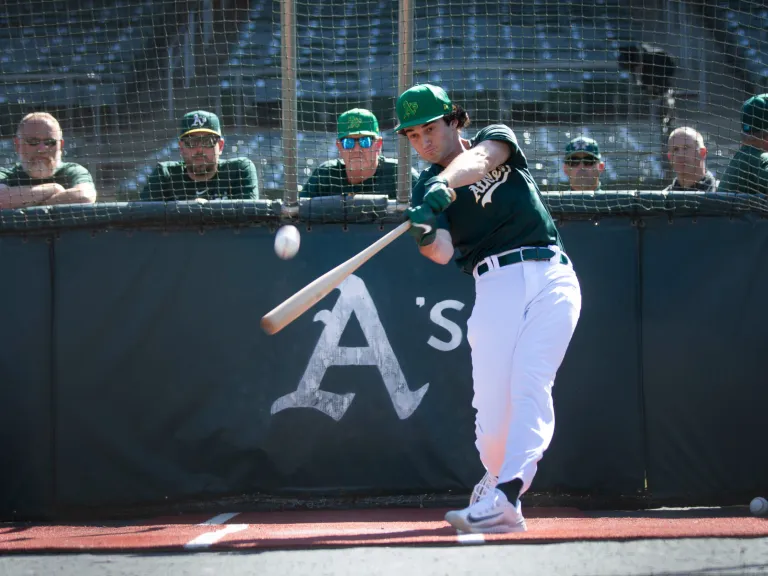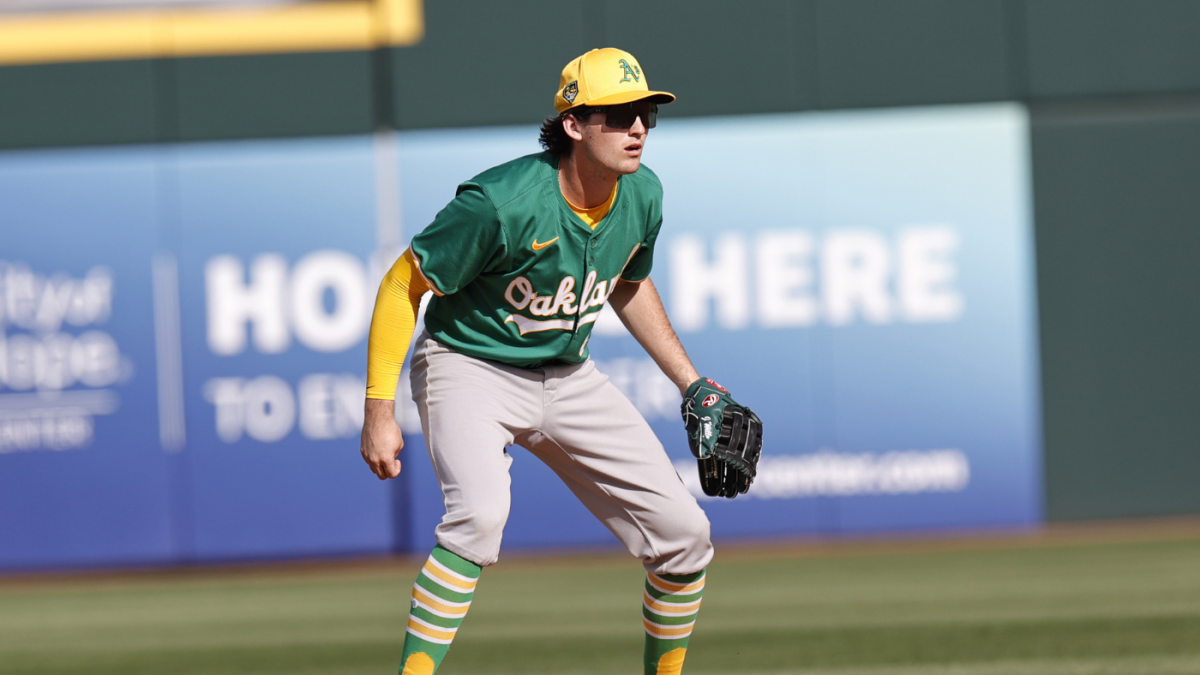
The Oakland Athletics are set to promote Jacob Wilson, a promising young shortstop prospect, to the majors this Friday, just before they resume their season against the Los Angeles Angels.
Wilson, who was drafted sixth overall last summer, aims to fill a critical gap for the Athletics: consistent performance at the shortstop position. During his 19 games in Triple-A, he posted impressive numbers with a batting average of .398, an on-base percentage of .444, and a slugging percentage of .639, hitting four home runs while maintaining a higher walk rate than strikeouts. Throughout the season, he has maintained a stellar .438/.475/.687 slash line over 200 plate appearances.

Considering Wilson’s impressive stats and his baseball pedigree (his father Jack was a MLB shortstop), many might speculate that this could be the pivotal moment the Athletics have been waiting for since their roster overhaul in early 2022. Even their temporary relocation to Sacramento could symbolize a fresh start, potentially signaling a positive turn for John Fisher’s team. However, there are lingering doubts about this scenario, which we elaborate on with three key reasons below.
1. Polarizing skill set
Those who followed our draft coverage last summer will recall Jacob Wilson as a polarizing prospect. He is known for his exceptional ability to make contact (connecting on over 93% of his swings in Triple-A), but he lacks power, with metrics placing him at the bottom of the scale in strength. His average exit velocity in Triple-A was 84.3 mph, which would rank near the bottom among MLB players, and his maximum exit velocity of 106.1 mph similarly lacks elite power.
In essence, Wilson’s offensive profile is extreme in its focus on contact at the expense of power—a combination that typically raises doubts about its effectiveness against major league pitching until proven otherwise. Despite his impressive minor league statistics, Wilson is not immune to these concerns.
Adding complexity to the situation is Wilson’s promotion at a time when many front offices are cautious about overinterpreting minor league performance during a period of organizational restructuring.
Supporters of Wilson envision him finding success akin to players like Luis Arraez and Steven Kwan, who thrive with similar profiles, while skeptics might compare him to players like Nicky Lopez and Kevin Newman. Wilson’s advantage lies in his strong defensive skills at shortstop, which lessen the offensive demands he must meet to hold value.
2. Uncertainty about rest of core
Regardless of your opinion of Wilson, positive or negative, it’s generally unwise to rely solely on one player for future hopes. The Oakland A’s have already been embracing a youth movement for a while now. Three of their main hitters are 26 or younger, and five out of their eleven most used position players fit that age bracket. These aren’t just random youngsters filling spots; Tyler Sodersom and Zack Gelof were top-60 picks, while JJ Bleday and Shea Langeliers were top-10 picks acquired through trades. Lawrence Butler, a sixth-round pick, is the exception without high prospect credentials. Among these players, only Bleday boasts an OPS+ over 110; Sodersom follows at 105, and Langeliers and Butler hover around 100, with Gelof below 90.
When evaluating young talent, it’s shortsighted to focus solely on current statistics. Projecting growth or decline is crucial. Advanced metrics suggest potential improvement for Sodersom and Langeliers, indicating they could contribute more. Oakland will need these players and others to develop further if they aim to compete again.
Notably, the pitching staff ranks 13th in the American League for ERA despite favorable conditions. Mason Miller shows promise, and Joey Estes might pan out, but uncertainty surrounds the rest, including trade rumors about Miller before the upcoming MLB deadline.
Oakland does have some reliable or potentially reliable players, but significant reinforcements are essential before they can challenge teams like the Mariners, Astros, and Rangers.
3. Lacking farm system
Despite trading away several stars for prospects just over two years ago and making four top-10 selections since 2017, the Oakland A’s farm system isn’t as robust as one might expect. They have only received modest recognition in recent prospect updates: Baseball Prospectus listed just one A’s player (Wilson) in their latest top-50 update, while FanGraphs gave high grades to Wilson and Miller in May, but Miller has already graduated from prospect status.
Looking ahead, right-hander Luis Morales and first baseman Nick Kurtz (the No. 4 pick in the recent draft) are seen as the system’s top prospects, but the track record of collegiate first basemen in the first round isn’t promising, which tempers expectations for Kurtz.
While baseball often sees unexpected players emerge, the A’s can provide opportunities that more competitive teams might not. Nevertheless, unlike teams like Washington or Pittsburgh, who have a steady stream of top prospects to aid their transitions, Oakland doesn’t currently boast such depth.
Thus, even with Wilson’s potential impact after another round of rebuilding, the path for the A’s to return to contention remains challenging to map out.
Leave a Reply